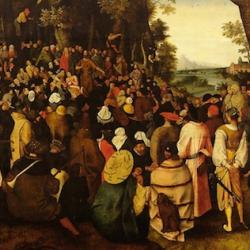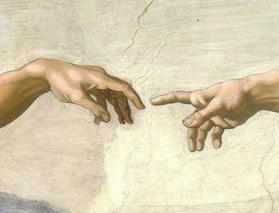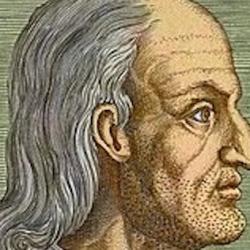In the same 2003 article, Cameron comments on the iconodule use of heresiological methods in dealing with the iconoclasts after the Second Council of Nicea: ”the victorious iconophiles hada strong interest in endorsing their council as the seventh and culminating representative of a series already formally recognized. They wanted to have it all ways: thus Tarasius termed the iconoclasts ‘Jews and Saracens, Hellenes and Samaritans, Manichaeans and phantasiasts, equal to Theopaschites.’ Naming was all important, for it was far from clear that the iconoclasts were in fact heretics.”
A ninth century Byzantine work employed the same methods:
“according to the ninth-century Life of Niketas of Medikion , Iconoclasm is undoubtedly a heresy of the worst kind, both because it strikes at the very oikonomia of Christ and because it originated suddenly and in the very bosom of imperial power. Neither argument is very convincing.Yet the assimilation was vital to the iconophile case. A useful example of official attitudes toward heretics had been given by the decrees ofcapital punishment issued against Montanists and “Manichaeans” by the iconoclast emperors Leo III and Constantine V and their attempted enforcement by Michael I. Guilt by association was implied in the use of these and other classic labels. If iconoclasts could be consigned to the same category, the iconophile case was made.”
Patriarch Nicephorus, Cameron notes, was a master of the “vocabulary of denigration,” and mounted a triple attack on the iconoclasts: “iconoclasts are enemies of the holy, they
are irrational, and they are the antithesis of culture and oikonomia. The Jews and Hellenes, like the familiar triad of Arius, Apollinarius, and Eutyches, are cited for comparison: the iconoclasts are like them, or worse. The language of heresiology, like the language commonly employed about Jews, easily turns into the language of scorn and the vocabulary of abuse. Similarly, in the ninth-century illuminated psalters, iconoclasts are directly equated with heretics. Thus John the Grammarian is likened to Simon Magus, the head and leader of all heresies according to the Acts of Second Nicaea and many earlier texts, in the Chludov and Pantokrator psalters. Not surprisingly, heretics are also, and even more frequently, equated with Jews, in an elision of anti-Jewish, antiheretical, and anti-iconoclast rhetoric.”











